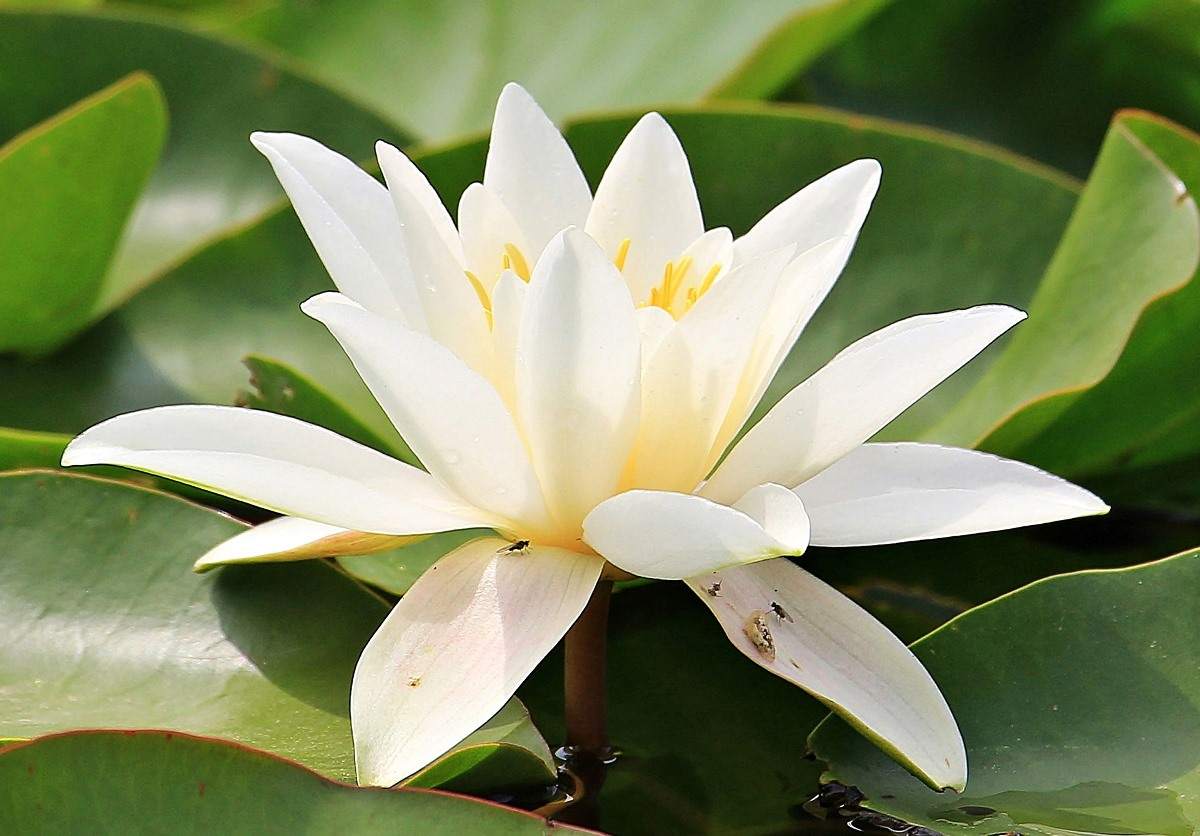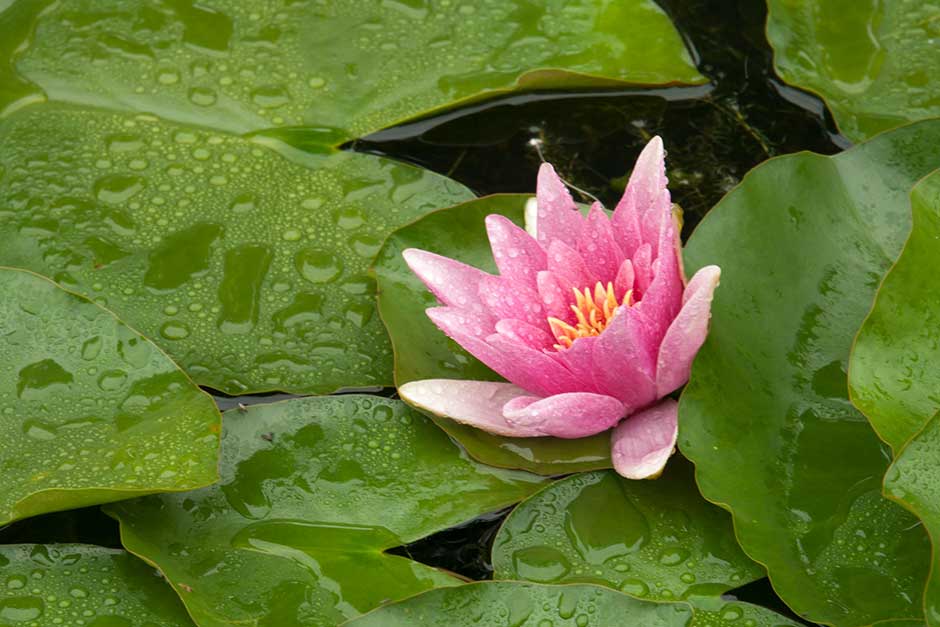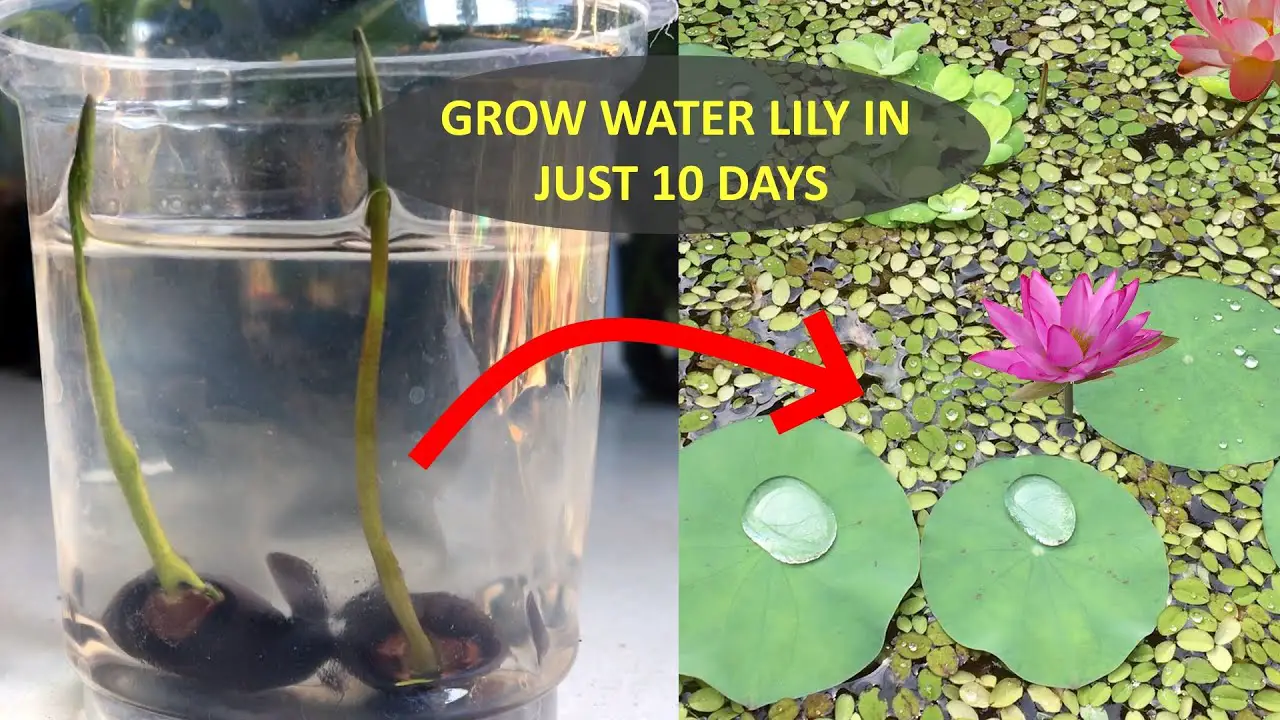Unlocking the Secrets of Water Lily Care
Water lilies have been a staple of serene water features for centuries, transforming ponds, lakes, and even small water gardens into breathtaking oases. These aquatic plants are not only visually stunning, but they also provide a natural haven for wildlife and help maintain water quality. However, to truly unlock the beauty and benefits of water lilies, it’s essential to understand the importance of proper care and maintenance. Learning how to grow water lilies requires attention to detail, patience, and a willingness to provide the right environment for these plants to thrive.
With the right care, water lilies can bloom profusely, producing exquisite flowers in a variety of colors, from pure whites and soft pinks to vibrant yellows and bi-colored varieties. But, without proper maintenance, water lilies can quickly become overgrown, leading to reduced blooming and even plant death. By understanding the needs of these plants and providing the right conditions, you can enjoy the beauty and serenity of water lilies for years to come.
Whether you’re a seasoned gardener or just starting to explore the world of aquatic plants, learning how to grow water lilies can be a rewarding experience. With the right guidance, you can create a stunning water feature that not only showcases the beauty of these plants but also provides a peaceful retreat from the stresses of everyday life. In this article, we’ll delve into the world of water lily care, providing you with the knowledge and expertise needed to grow these incredible plants.
Choosing the Right Water Lily Variety for Your Pond
With over 70 species of water lilies, choosing the right variety for your pond can be a daunting task. However, by understanding the different types of water lilies and their specific needs, you can make an informed decision and ensure the success of your aquatic garden. When it comes to growing water lilies, it’s essential to select a variety that is well-suited to your climate and water conditions.
Hardy water lilies are the most popular choice for ponds in temperate climates. These varieties are tolerant of cooler temperatures and can survive light frosts, making them ideal for zones 3-9. Some popular hardy water lily varieties include ‘Albiflora’, ‘Attraction’, and ‘Comanche’. Tropical water lilies, on the other hand, are better suited for warmer climates and can thrive in zones 9-11. These varieties are more sensitive to cooler temperatures and require protection from frost.
When selecting a water lily variety, consider the size of your pond, the depth of the water, and the amount of sunlight it receives. Some water lilies can grow quite large, so it’s essential to choose a variety that is proportional to your pond. Additionally, consider the color and shape of the blooms, as well as the plant’s growth habits. By choosing the right water lily variety for your pond, you can create a stunning and thriving aquatic garden.
For those new to growing water lilies, it’s recommended to start with a hardy variety. These plants are generally easier to care for and can tolerate a range of water conditions. As you gain more experience and confidence in your ability to grow water lilies, you can experiment with tropical varieties and more exotic species.
By understanding the different types of water lilies and their specific needs, you can make an informed decision and choose the right variety for your pond. With the right care and attention, your water lilies will thrive, providing you with a beautiful and serene aquatic garden. Learning how to grow water lilies requires patience and attention to detail, but with the right guidance, you can create a stunning and thriving water garden.
https://www.youtube.com/watch?v=VFhO6PiBMVM
Preparing the Perfect Environment for Water Lilies
Creating an ideal environment is crucial for the health and well-being of water lilies. These aquatic plants require specific water conditions to thrive, and neglecting these requirements can lead to poor growth, disease, and even plant death. When learning how to grow water lilies, it’s essential to understand the importance of water depth, temperature, and pH levels.
Water lilies prefer water depths between 12 and 48 inches, depending on the variety. Hardy water lilies can tolerate deeper water, while tropical varieties prefer shallower water. It’s also essential to ensure that the water is calm and free of strong currents, which can damage the plants. A pond with a smooth, even bottom and a gradual slope is ideal for water lilies.
Water temperature is another critical factor in creating an ideal environment for water lilies. These plants prefer water temperatures between 65°F and 85°F (18°C and 30°C), with optimal growth occurring between 75°F and 80°F (24°C and 27°C). Avoid placing water lilies in areas with extreme temperature fluctuations, as this can cause stress to the plants.
pH levels are also crucial for water lilies, with most varieties preferring a slightly acidic to neutral pH range (6.5-7.5). Avoid placing water lilies in areas with high pH levels, as this can lead to nutrient deficiencies and poor growth. Regular water testing can help ensure that the pH levels remain within the optimal range.
In addition to these factors, it’s also essential to provide water lilies with adequate sunlight and nutrients. Most varieties require at least 6 hours of direct sunlight per day, while some tropical varieties can tolerate partial shade. Fertilization is also crucial, as water lilies require a balanced diet of nutrients to thrive.
By creating an ideal environment for water lilies, you can ensure that these beautiful plants thrive and provide a stunning display of blooms. Remember to monitor water conditions regularly and make adjustments as necessary to maintain optimal growth. With the right environment and care, water lilies can be a stunning addition to any pond or water garden.
Planting Water Lilies: A Step-by-Step Guide
Planting water lilies is a straightforward process that requires some basic knowledge and preparation. When learning how to grow water lilies, it’s essential to understand the importance of proper planting techniques to ensure the health and well-being of these aquatic plants. Here’s a step-by-step guide on how to plant water lilies:
Step 1: Choose a Healthy Rhizome
Start by selecting a healthy water lily rhizome from a reputable nursery or online supplier. Look for rhizomes with firm, green leaves and a robust root system. Avoid rhizomes with signs of disease, pests, or damage.
Step 2: Prepare the Planting Site
Before planting, ensure the water is calm and free of strong currents. Choose a location with the right water depth and temperature for the specific water lily variety. Remove any debris or algae from the planting site to prevent competition for nutrients.
Step 3: Plant the Rhizome
Plant the rhizome in the prepared site, making sure the crown (where the leaves meet the rhizome) is above the soil surface. Gently spread the roots outwards, and secure the rhizome with a small amount of soil or a planting basket. Make sure the soil is firmly packed around the rhizome to prevent it from floating away.
Step 4: Secure the Plant
Use a planting basket or a small amount of soil to secure the water lily in place. Make sure the plant is stable and won’t be dislodged by water currents or other aquatic life.
Step 5: Monitor and Maintain
After planting, monitor the water lily’s progress, and make adjustments as necessary. Ensure the water level remains consistent, and the plant receives adequate sunlight and nutrients. Regular maintenance, such as pruning and fertilizing, will help promote healthy growth and blooming.
By following these simple steps, you can successfully plant water lilies and enjoy their beauty and serenity in your pond or water garden. Remember to provide the right environment and care, and your water lilies will thrive, providing a stunning display of blooms and foliage.
Fertilizing and Maintaining Water Lilies for Optimal Growth
Fertilizing water lilies is essential for promoting healthy growth and blooming. When learning how to grow water lilies, it’s crucial to understand the importance of providing the right nutrients for these aquatic plants. A balanced fertilizer that contains nitrogen, phosphorus, and potassium (NPK) is ideal for water lilies.
Choose a fertilizer that is specifically designed for aquatic plants, and follow the manufacturer’s instructions for application rates. It’s also essential to monitor the water’s nutrient levels and adjust the fertilizer application accordingly. Over-fertilization can lead to excessive algae growth, which can harm the water lilies and other aquatic life.
In addition to fertilizing, regular maintenance is necessary to keep water lilies healthy and thriving. Pruning is an essential part of water lily care, as it helps to promote healthy growth and prevent the plant from becoming too leggy. Remove any dead or dying leaves and flowers, and trim back the plant to maintain its shape.
Dividing water lilies is also necessary to maintain their health and promote new growth. Divide the plant every 2-3 years, making sure each section has at least one growing point. This will help to prevent the plant from becoming too crowded and promote healthy growth.
Regular monitoring of the water’s pH and temperature levels is also crucial for maintaining the health of water lilies. Make adjustments as necessary to ensure the water remains within the optimal range for the specific water lily variety.
By fertilizing and maintaining water lilies correctly, you can promote healthy growth and blooming, and enjoy the beauty and serenity of these aquatic plants. Remember to provide the right environment and care, and your water lilies will thrive, providing a stunning display of blooms and foliage.
Common Problems and Pests: Troubleshooting Water Lily Issues
Despite their beauty and serenity, water lilies can be susceptible to various problems and pests. When learning how to grow water lilies, it’s essential to be aware of these potential issues and know how to address them. Here are some common problems and pests that can affect water lilies:
Algae: Algae can quickly overgrow and choke out water lilies. To prevent algae growth, ensure the water is well-circulated, and consider using an algae-control product.
Snails: Snails can eat holes in water lily leaves and flowers. To control snail populations, introduce natural predators, such as fish or frogs, or use snail-control products.
Aphids: Aphids can infest water lily leaves and stems, causing curled or distorted growth. To control aphid populations, use insecticidal soap or neem oil.
Root rot: Root rot can occur when water lilies are planted too deeply or in water that is too cold. To prevent root rot, ensure the water is at the right temperature, and plant the water lily at the correct depth.
Pests and diseases: Regularly inspect your water lilies for signs of pests or diseases, such as holes in the leaves, white powdery patches, or black spots. Research the specific problem and take action to address it.
By being aware of these potential problems and pests, you can take steps to prevent them and ensure your water lilies remain healthy and thriving. Remember to monitor your water lilies regularly and take action quickly if you notice any issues.
Water Lily Care Tips for Different Seasons
Water lilies are adaptable plants that can thrive in various seasons, but they do require specific care during different times of the year. When learning how to grow water lilies, it’s essential to understand the seasonal care requirements to ensure the plants remain healthy and continue to bloom.
Spring: In the spring, water lilies begin to emerge from their winter dormancy. During this time, it’s essential to provide them with plenty of sunlight and nutrients. Fertilize the plants with a balanced fertilizer, and ensure the water temperature is between 65°F and 75°F (18°C and 24°C).
Summer: Summer is the peak growing season for water lilies. Ensure the plants receive plenty of sunlight, and maintain a water temperature between 75°F and 85°F (24°C and 30°C). Fertilize the plants regularly, and prune them to maintain their shape and promote blooming.
Fall: In the fall, water lilies begin to prepare for their winter dormancy. Reduce fertilization, and ensure the water temperature is between 50°F and 65°F (10°C and 18°C). Prune the plants to remove any dead or dying leaves, and divide them if necessary.
Winter: During the winter months, water lilies are dormant. Ensure the water temperature is between 35°F and 50°F (2°C and 10°C), and reduce fertilization. Protect the plants from extreme cold and ice, and ensure the water level remains consistent.
By following these seasonal care tips, you can ensure your water lilies remain healthy and continue to bloom throughout the year. Remember to monitor the plants regularly and adjust their care accordingly to ensure optimal growth and blooming.
Enjoying the Fruits of Your Labor: Water Lily Bloom Care
Watching water lilies bloom is one of the greatest joys of growing these beautiful plants. When learning how to grow water lilies, it’s essential to understand the importance of proper bloom care to ensure the flowers remain healthy and continue to bloom.
Deadheading: Deadheading is the process of removing spent flowers to promote repeat blooming. Use scissors or pinch off the spent blooms to encourage the plant to produce more flowers.
Promoting Repeat Blooming: To promote repeat blooming, ensure the water lily plant is receiving enough nutrients and sunlight. Fertilize the plant regularly, and prune it to maintain its shape and promote healthy growth.
Protecting the Blooms: Protect the blooms from extreme weather conditions, such as strong winds and intense sunlight. Use a shade cloth or other protective covering to shield the blooms from harsh conditions.
Enjoying the Blooms: Finally, take time to enjoy the beauty of your water lily blooms. Sit back, relax, and appreciate the serenity and tranquility that these beautiful plants bring to your water feature.
By following these simple tips, you can enjoy the beauty of your water lily blooms and create a stunning display of color and serenity in your water feature. Remember to provide the right care and attention, and your water lilies will thrive, providing you with a beautiful and peaceful oasis.








